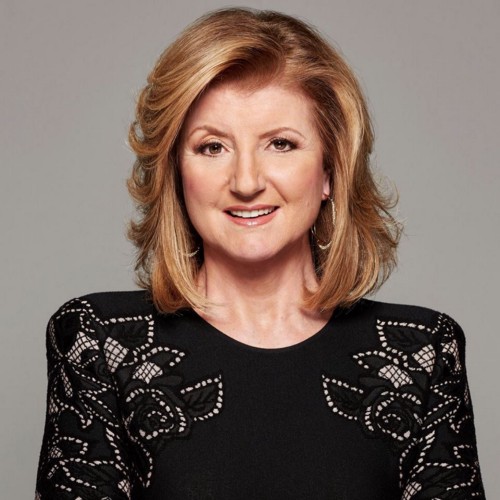An excerpt from Thrive.
The effects of giving as we age are especially dramatic: A study from Duke University and the University of Texas at Austin found that senior citizens who volunteered had significantly lower rates of depression than non-volunteers. And a Johns Hopkins study found that volunteering seniors were more likely to engage in brain- building activities that lower the risk of Alzheimer’s disease. Those who have suffered the loss of their defining roles as parents or wage earners were able to regain a sense of purpose in their lives.
Studies of the effects of giving in the workplace are equally dramatic and show the impact of volunteering on creating a healthier, more creative, and collaborative workforce. At AOL and The Huffington Post, we offer our employees three paid volunteer days each year to serve in their communities and we match up to $250 a year of charitable contributions per employee. A 2013 study by UnitedHealth Group found that employee volunteer programs increased engagement and productivity. Among the study’s other findings: More than 75 percent of the employees who had volunteered said they felt healthier. • More than 90 percent said volunteering had put them in a better mood. • More than 75 percent reported experiencing less stress. • More than 95 percent said that volunteering enriched their sense of purpose in life (which, in turn, has been found to strengthen immune function). • Employees who volunteered reported improved time- management skills and enhanced ability to connect with peers.
Another 2013 study, this one by researchers at the University of Wisconsin, found that employees who give back are more likely to assist their colleagues, more committed to their work, and less likely to quit. “Our findings make a simple but profound point about altruism: helping others makes us happier,” says Donald Moynihan, one of the study’s authors. “Altruism is not a form of martyrdom, but operates for many as part of a healthy psychological reward system.”
It is a reward system that should be incorporated into how we think about health care. “If you want to live a longer, happier, and healthier life, take all the usual precautions that your doctor recommends,” says Sara Konrath of the University of Michigan, “and then . . . get out there and share your time with those who need it. That’s the caring cure.”
Givers also end up getting ahead at work. (Nice guys don’t finish last!) In his best-selling book Give and Take, Wharton professor Adam Grant cites studies that show that those who give their time and effort to others end up achieving more success than those who don’t. Salespeople with the highest annual revenue are those who are the most motivated to help their customers and coworkers; the engineers with the highest productivity and fewest errors are those who do more favors for colleagues than they receive. The highest achieving negotiators are those who focus not only on their own goals, but also on helping their counterparts succeed. Grant also cites research indicating that companies led by CEOs who are “takers” end up having more fluctuating, volatile returns.
CEOs who are “givers” identify their companies’ goals as going beyond short- term profits. Starbucks, under the leadership of Howard Schultz, for instance, not only instituted Create Jobs For USA — a job creation initiative that has raised over $15 million and created and sustained more than five thousand jobs — but the company also sponsored more than a million hours of community service by employees and customers over the past two years. Schultz explained that behind these policies lies his belief that “profitability is a shallow goal if it doesn’t have a greater purpose behind it.” For Schultz, that purpose is to drive performance through the lens of humanity by delivering value to shareholders while simultaneously sharing the company’s success, reaching out to the communities it serves, and consistently delighting its customers. In 2013, during the shutdown of the U.S. government, customers who bought a beverage for someone else were rewarded with a free brewed coffee in return. In a letter to Starbucks employees, Schultz wrote, “Every day in our stores, we bear witness to small acts of human kindness that reflect the generosity of spirit at the core of our guiding principles. Most often, these are the little gestures that best embody our commitment to our communities and our care for our customers, and one another.”
Given the unmistakable benefits of putting empathy into action, how do we strengthen that impulse? And how do we pass it on to our kids? Parents are constantly thinking about how to help their children succeed in life, earn a good salary, advance in their profession, or simply be happy. But it’s just as important to pass down a rich capacity for compassion, especially if we really want them to be happy. This is all the more true in a world where we are beset on all sides by technological distractions and the lure of ersatz connections that can disrupt our pathways of empathy.
A 2010 San Diego State University study found a fivefold increase in depression among children in the United States since the 1930s. To teach children about emotional literacy and empathy, Mary Gordon, a former kindergarten teacher and an Ashoka fellow, founded Roots of Empathy. She believes empathy is best nurtured by example. “Love grows brains,” Gordon says. “We need to show children a picture of love as we raise them. Learning is relational and empathy is constructed, not instructed. . . . The baby refl ects the emotional state of the parents.” In her program, classrooms “adopt” a baby and carefully observe and try to determine what the baby is trying to tell them through the sounds it makes. Instructors educate students on how to recognize the baby’s emotions through these physical cues, and, in turn, the students learn to explore their own emotions. Spending time mindful of how a baby communicates deepens students’ understanding not only of the patience and love needed to parent a child properly but also of the kind of attention and connection necessary to develop empathy. It’s not enough to tell our children about empathy; we have to show them — which means, of course, that we have to demonstrate it ourselves. Parents teach empathy the same way they help their children learn to talk.
Of course, not everybody is blessed with parents who model empathy. But, fortunately, the effects of growing up in a family that is not rich in empathy can be reversed. It’s never too late to transcend our childhoods. Any entry point of giving and service can lead to benefits for our wellbeing — and for our community.
Bill Drayton emphasizes that empathy is an increasingly important resource for dealing with the exponential rate of change we are experiencing. “The speed at which the future comes upon us — faster and faster — the kaleidoscope of constant change contexts,” he says, “requires the foundational skill of cognitive empathy.”
And the best way to build that internal foundation is to reach out to others. Compassion and giving don’t have to involve getting on a plane to build houses or teach school in a remote part of the world. It may involve helping people across town. Or helping your neighbors. And it doesn’t just mean giving money. As Laura Arrillaga- Andreessen put it in her book Giving 2.0: Transform Your Giving and Our World, it may involve donating “skills in areas such as strategic planning, management, human resources, marketing, design, or IT to nonprofits in need of those skills,” as the Taproot Foundation does.
Excerpt from Thrive pp. 240- 245


